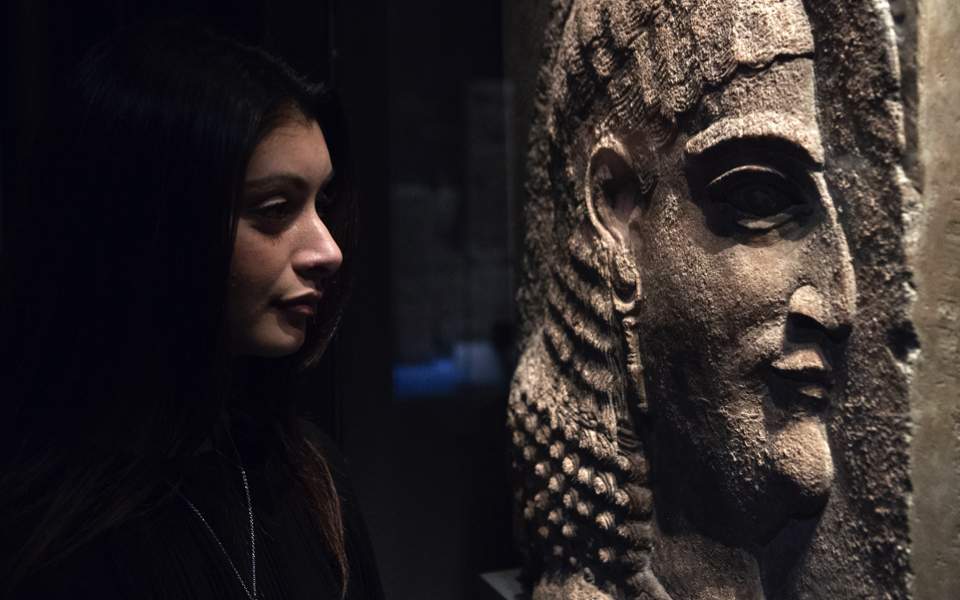by
Damien F. Mackey
“… there is a
clear parallel between the Inscription of Esarhaddon and a text of Assurbanipal
[who] … says that he has brought the peoples that live in the sea and those
that inhabit the high mountains under his yoke, and this reference, as we
understand it, is very like Esarhaddon’s text, since it is also “a general
summary”.”
Arcadio Del Castillo and Julia Montenegro
Why this particularly interests
me is due to my identification of Esarhaddon and Ashurbanipal as one and the
same king, as well as being alter egos of
the mighty Nebuchednezzar:
Aligning
Neo-Babylonia with Book of Daniel. Part Two: Merging late neo-Assyrians with
Chaldeans
Arcadio Del Castillo and Julia Montenegro have made a valiant effort to
identify the elusive biblical “Tarshish” in their article:
THE LOCATION OF TARSHISH: CRITICAL CONSIDERATIONS
Revue Biblique, 123, 2016, pp. 239-268
But what struck me when reading through this
article is yet another case of, as it seems to me, a ‘historical’ duplication,
Ashurbanipal claiming what Esarhaddon claimed.
Writing of the neo-Assyrian sailing efforts, the
authors tell as follows (pp. 252-254):
… the only record we have of
them sailing the Mediterranean is when Sargon II gained control of Cyprus,
which was further secured by his successors, Sennacherib, Esarhaddon, and
Assurbanipal, 668-627 BC….
My comment: As Esarhaddon,
Ashurbanipal, is just the one king according to my article above, so, too,
with:
Assyrian King Sargon II, Otherwise Known
As Sennacherib
The authors
continue:
Of course, the text of the
Assyrian Inscription of Esarhaddon defines the extent of the Assyrian king’s
domain, in maritime terms, from one area in the direction of the other, but we
believe its extent would have been within maritime limits of the Assyrian
Empire itself, in which case Tarshish would very probably have been in the Red
Sea or the Indian Ocean. Thus, the text is perfectly consistent with King
Solomon’s policy of procuring the products he needed in the regions to the
South and East of his kingdom, which in Antiquity formed a vast emporium of all
kinds of luxury goods; and since these regions had to be reached by sea,
Solomon ordered a fleet to be built in Ezion-geber on the Gulf of Akaba with
ships of Tarshish, for which he sought the aid of Hiram I of Tyre, who sent his
men, the unrivalled seafarers of Antiquity, because the Israelites had not,
until then, had any contact with the sea. It is difficult to imagine the
Phoenicians helping Solomon reach places with which he had no contact using routes
only known to themselves, such as the Far West; however, helping him reach
destinations nearer home by routes that were generally known does seem
reasonable. What is conclusive is the fact that in Esarhaddon’s Inscription the
reference to the kings of the middle of the sea comes after enumerating his
conquests, which are listed as: Sidon … Arza … Bazu … Tilmun … Shubria … Tyre …
Egypt and Pathros … and Kush.
And, since Bazu seems to be
situated in the northwest of Arabia and Tilmun on the Persian Gulf, very
possibly Bahrain … what seems more logical is to assume that it is a
delimitation in both seas of the cosmic ocean, this is the Upper Sea and the
Lower Sea. So it would be a broad area that extended beyond the Mediterranean;
and reference is made to it just before saying that the Assyrian king had
established his power over the kings of the four regions of the Earth … which
is an obvious parallel with the part of the text studied in reference to his
maritime empire.
What can of course be readily
accepted, as we have said, is that there is a clear parallel between the
Inscription of Esarhaddon and a text of Assurbanipal, which is inscribed on
Prism B: after stating that he ruled from the Upper Sea to the Lower Sea and
that the kings of the rising sun and the setting sun brought him heavy tribute,
Assurbanipal says that he has brought the peoples that live in the sea and
those that inhabit the high mountains under his yoke … and this reference, as
we understand it, is very like Esarhaddon’s text, since it is also “a general
summary”. And in this case, everything appears to indicate that the peoples
referred to were to be found in both seas. Esarhaddon’s text defines the
maritime dominion of the Assyrian king from one area to another, but of course
it must fall within the actual maritime limits of the Assyrian Empire itself,
so its boundary cannot be defined in the Far West, since we would soon leave
the area under Assyrian rule. Therefore Tarshish would very probably be on the
Red Sea or the Indian Ocean ….
[End of quote]

No comments:
Post a Comment